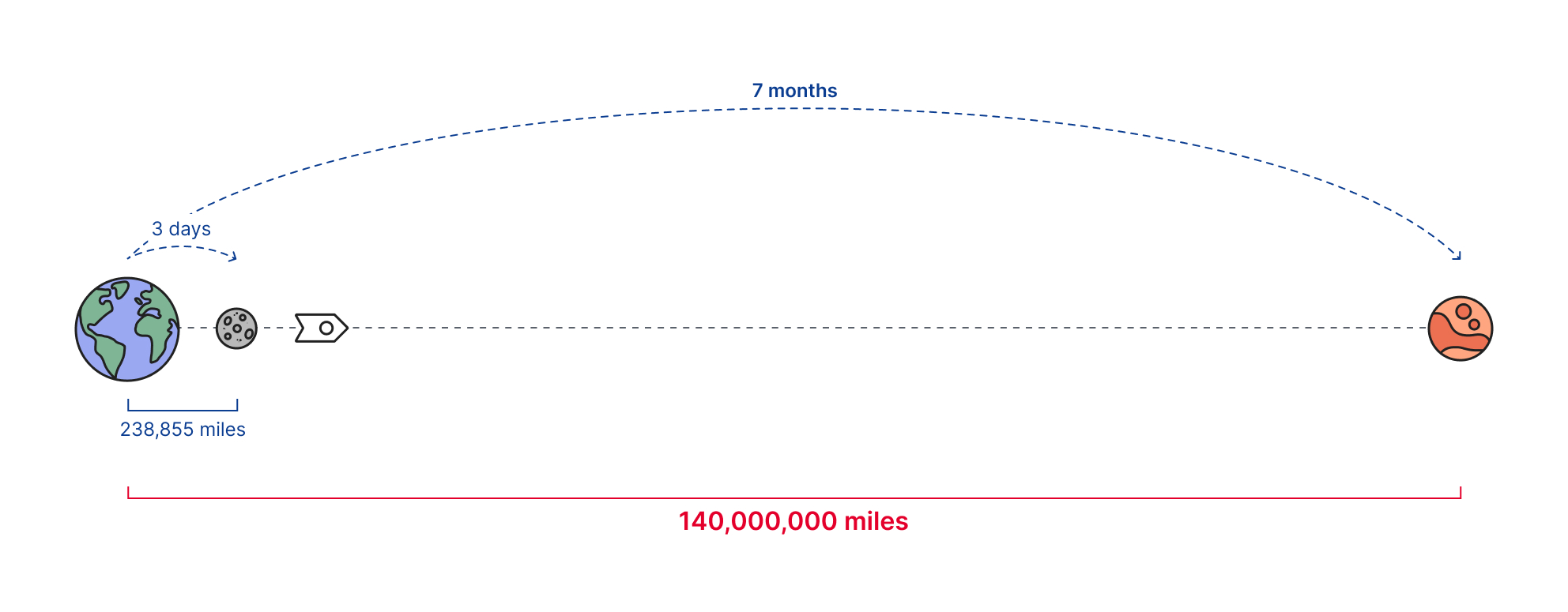Research Behind Designing Tasks for Time-Critical Anomalies
The following information is designed to provide NASA researchers with valuable insights and knowledge on designing a task. This includes background research on how we started the process to our final findings we discovered through testing.
Lithium hydroxide canister in Apollo 13 Emergency when Mission Control had to solve for a time-critical anomaly
Context
During future missions to Mars, astronauts will have to endure an up-to 40 minute round-trip communication delay.

How communication delay affects long-duration space travel
When unexpected problems arise, astronauts must operate with autonomy to solve these anomalies in the absence of Mission Control.
Currently, NASA is researching new ways to aid astronauts in solving anomalies in space, but there is no standard method to assess readiness for their nearest furtherest mission: going to Mars.

Distance between the moon and Mars
The Goal
Our goal is to empower researchers to better identify gaps in anomaly resolution through evaluating teams' performances in creative problem solving scenarios. To achieve this, we began researching extensively in relevant areas.